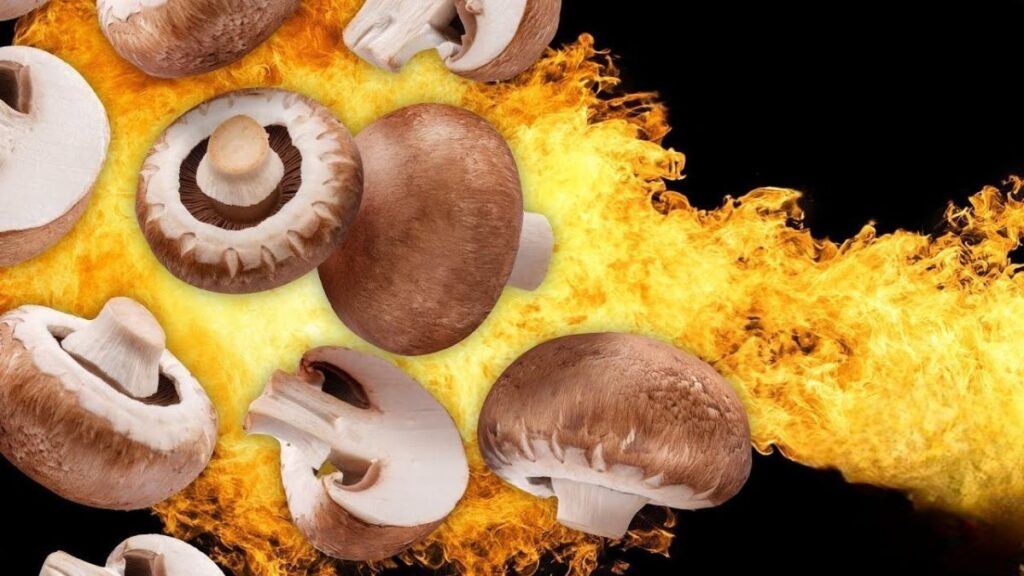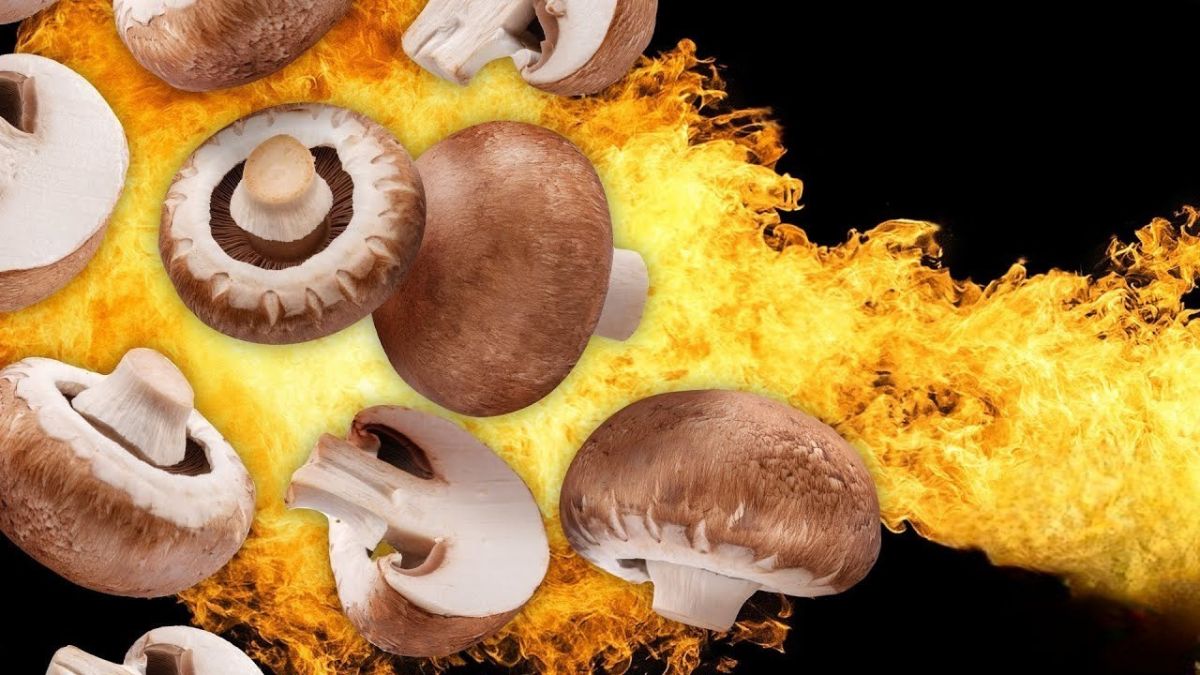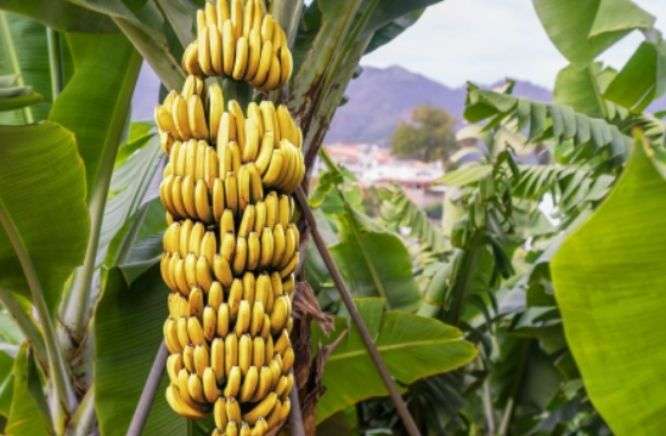
Mushrooms are very different from the other produce in your fridge because, first and foremost, they are not even plants from a biological standpoint. What also makes them different from the other fruits and vegetables in your fridge is how well they cook.
Because you can’t really overcook a mushroom, no matter how hard you try, a dish based on mushrooms can make even the most inexperienced chef look like a culinary genius.
America’s Test Kitchen compared the heat resistance of zucchini, beef tenderloin, and portobello mushrooms in an experiment to see how different foods change texture as they cook.
All three were deemed tender by taste testers after five minutes of steaming, but that quickly changed after just five minutes. Their texture was very similar.
While the zucchini became mushy and the beef began to become more tough, the mushroom remained perfectly tender.
While the beef had turned to leather and the zucchini had turned to goo after 40 minutes of steaming, the mushroom retained roughly the same texture and tenderness rating.
So, why were these three foods so different when cooked for a long time?
The issue of overcooking comes down to the biology of the food.
Therefore, let’s begin with meat.
Because the heat kills any harmful bacteria that may be present in the meat, we cook it to make it safe to eat.
As long as you don’t overdo it, cooking has the added benefit of making meat tender and delicious.
Overcooking a steak can turn it from delicious to nearly inedible in just a few minutes, as anyone who has done so will attest.
Now, structurally speaking, meat is primarily composed of proteins, which are long chains of amino acids connected by strong hydrogen bonds.
Denaturing is the process by which heat breaks these bonds and causes them to unravel.
Applying the perfect proportion of intensity makes exceptionally delicate meat due to what occurs as the proteins denature.
Consider the proteins actin and myosin.
These proteins, for instance, are some of the first to denature when meat is heated and are responsible for capturing water in the meat.
They release some of the water they are holding onto as they change shape, making the meat more succulent.
Collagen fibers, which help provide structure and connect tissue fragments to one another, make some raw meat cuts tough.
The collagen also breaks down as the meat’s temperature rises, transforming into gelatin and giving the meat a tender, melt-in-your-mouth, falling-off-the-bone texture.
Gelatin is what gives your jellies and mousse-like desserts their structure. Gelatin is solid and jiggly when it cools, but when it warms, it becomes a liquid, which is why it makes cooked meats more juicy.
Therefore, having too much of a good thing is essentially the cause of overcooked meat.
The myosin and actin proteins denature completely and discharge all the water.
They were clinging to, which left only tough proteins behind. At some point, the liquid gelatin becomes too difficult for the meat to hold onto, and all of it seeps out of the meat.
That is the chemistry of cooking meat too long.
However, the story of overcooked vegetables and their final texture are vastly different.
Polysaccharides like starches and cellulose make up the majority of plant matter, which is what gives celery stalks and leafy greens their rigid structure.
Long chains of hundreds or thousands of glucose molecules make up polysaccharides, which are polymers.
The bundles of these chains that result from hydrogen bonds are referred to as fibers; these fibers are what give polysaccharides their strength and stability.
However, when polysaccharides like starches and cellulose fibers are subjected to heat, the bonds weaken and break, releasing glucose.
Raw carrots are crunchy because of this, but roasting them softens and sweetens them.
Additionally, excessive cellulose breakdown occurs when roasting the carrots to an excessive degree.
Since that is the carrot’s primary structural component, there is essentially nothing left to hold it all together, resulting in carrot mush.
Even though they are frequently served alongside other vegetables on your plate, mushrooms are not a meat or vegetable.
Because they are fungi, mushrooms are more closely related to you than any other produce in the section.
The part of a mushroom that you eat is the fruiting body of a much larger organism called the mycelium. Fungi reproduce by spreading spores through that fruiting body.
Fungi, on the other hand, don’t just rely on proteins to keep their rigid structure.
Fungi use a polymer for their structure, not starch or cellulose, like plants do.
Chitin, a much more durable polymer, is what they use instead.
Chitin is a protein that you have probably seen or heard of.
Shellfish and insects build their exoskeletons out of chitin, which is much more heat-resistant than cellulose.
Chitin will not break down until it reaches nearly 400 degrees Celsius, whereas cellulose does so at lower temperatures.
which is higher than the majority of us normally turn up the heat while cooking.
Therefore, rigid chitin is essential for mushrooms to maintain their firmness during cooking.
The high water content of mushrooms accounts for any texture changes that may occur when they are cooked.
They release the extra water when they are cooked.
Even if you misread the recipe and cooked it for 100 minutes instead of 10, you couldn’t ruin the texture of a mushroom with heat. They were hanging on.
In terms of both their biological and culinary context, they are unique.
They stand out from other vegetables because of the way they are made, making cooking them seem simple while also impressing your dinner guests.
So in the event that you’re simply beginning on your culinary experiences, consider mushrooms as a portion of the principal food varieties you take a shot at cooking.
However, be aware that you can still burn them despite this.



![Moon Jellyfish has [ Hidden Secrets ] You don't know moon jellyfish](https://spaceupper.com/wp-content/uploads/2022/11/1-1.jpg)



